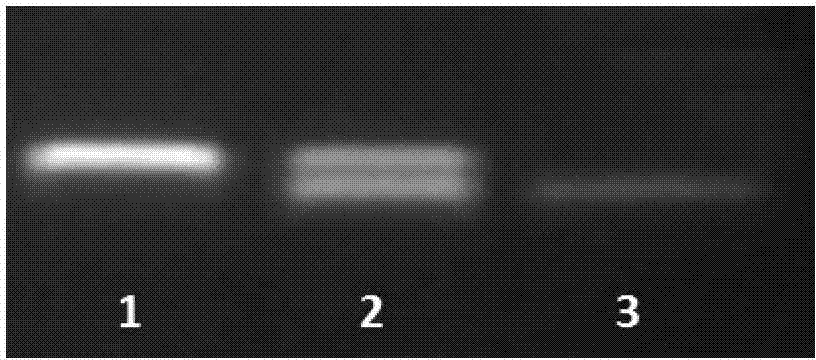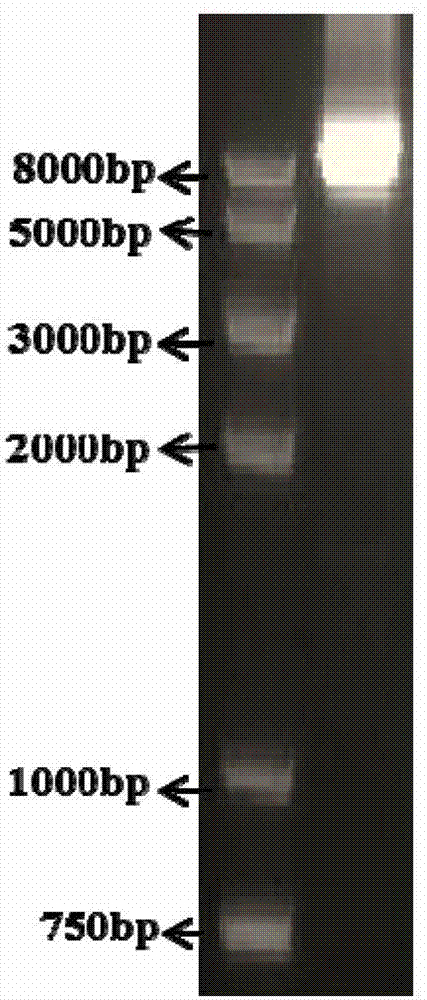Method for obtaining rice sterile line by utilizing RNAi (Ribose Nucleic Acid interfere) technology to control rice fertile gene
A technology of technical control and fertility genes, applied in the field of plant fertility genes, can solve the problems of low efficiency, no discovery of ABCG15, single population genetic type and trait performance, etc., and achieve labor saving, effective methods, and expansion of germplasm base Effect
- Summary
- Abstract
- Description
- Claims
- Application Information
AI Technical Summary
Problems solved by technology
Method used
Image
Examples
Embodiment 1
[0052] Example 1 Fine Mapping of the Single Recessive Genic Sterility Gene of the Present Invention
[0053] (1) Using two sequenced parents 9311 and Nipponbare with large genetic differences and H 2 S hybridization to construct the positioning population.
[0054] (2) Using H 2 SSR primers and Indel (insertion-deletion) markers with polymorphism between S and 9311 and Nipponbare, in H 2 S×9311 combination F 2 Among the 1200 recessive sterile individual plants, and H 2 S×Nippon Clear F 2 Among the 1320 recessive sterile plants, the linkage relationship between the polymorphic markers Indel40520 and RM20366 between the parents and the sterility gene was analyzed.
[0055] (3) Position the gene controlling the male sterility at a distance of 45K between Indel40520 and RM20366 (see figure 1 ). Indel40520 labeled primer sequence is:
[0056] Indel40520F: TTGGTCCCACAAATAAGTCATG (SEQ ID No: 6),
[0057] Indel40520R: TTGGAGCAACTGAAGCAAGGAA (SEQ ID No: 7);
[0058] The gene...
Embodiment 2
[0059] Example 2 Cloning and Identification of Rice Single Recessive Genic Sterility Gene of the Present Invention
[0060] According to the gene mapping results in Example 1, the Loc_OS06g40550 gene was used as a candidate gene for sequencing analysis. with H 2 S genome DNA is used as a template, and CDS40550-F and CDS40550-R are used as primers for PCR amplification, and the sequencing primers are:
[0061] CDS40550-F: CACCATGATGGAGATCAGCAGCAAT (SEQ ID No: 8),
[0062] CDS40550-R: CTACAAGGGCATGAGGCTGAT (SEQ ID No: 9);
[0063] Described PCR reaction system is: H 2 S genomic DNA 3 μL (200ng), dNTP (2mM) 5 μL, 10XPCR buffer 5 μL, 25mM Mg 2+ 2 μL, primer 10 μM 1.5 μL; KOD-plus-NEO enzyme (1U / μL) 1.5 μL; DMSO 1.5 μL (provided by TOYOBO); H 2 O 30.5 μL. The reaction conditions of the PCR are: 94°C for 2min; 98°C for 10s, 68°C for 1:30min, 35 cycles; 68°C for 10min, 10°C for 1min. Recover the PCR product (refer to the Omega recovery kit manual for the method), and connect ...
Embodiment 3
[0068] Example 3 Complementary transgene verification test
[0069] Proceed as follows:
[0070] 1 Construction of complementary expression vectors:
[0071] In order to verify H 2 Whether the S male sterile material is caused by the deletion of 12bp in ABCG15, the complementary transgene verification experiment was carried out. The construction method of the complementary expression vector is as follows:
[0072] 1.1 Take the normal fertile wild type (H 2 SW) Genomic DNA extracted from plant leaves was used as a template, and Q51 and Q52 were used as primers for PCR amplification; the primers were:
[0073] Q51: CCGGAATTCTGAATCGTCGTCACCTGCTAAGCCCAAAT (SEQ ID No: 12),
[0074] Q52: CGGGGTACCGTGTCCCTCCCTACCCAACCTAACCCAAC (SEQ ID No: 13);
[0075] The PCR reaction system is: Genomic DNA 3μL (200ng), dNTP (2mM) 5μL, 10xPCR buffer 5μL, 25mM Mg 2+2 μL, primer 10 μM 1.5 μL; KOD-plus-NEO (1U / μL) 1.5 μL; DMSO 1.5 μL (provided by TOYOBO); H 2 O 30.5 μL. The reaction conditions...
PUM
 Login to View More
Login to View More Abstract
Description
Claims
Application Information
 Login to View More
Login to View More - R&D
- Intellectual Property
- Life Sciences
- Materials
- Tech Scout
- Unparalleled Data Quality
- Higher Quality Content
- 60% Fewer Hallucinations
Browse by: Latest US Patents, China's latest patents, Technical Efficacy Thesaurus, Application Domain, Technology Topic, Popular Technical Reports.
© 2025 PatSnap. All rights reserved.Legal|Privacy policy|Modern Slavery Act Transparency Statement|Sitemap|About US| Contact US: help@patsnap.com



